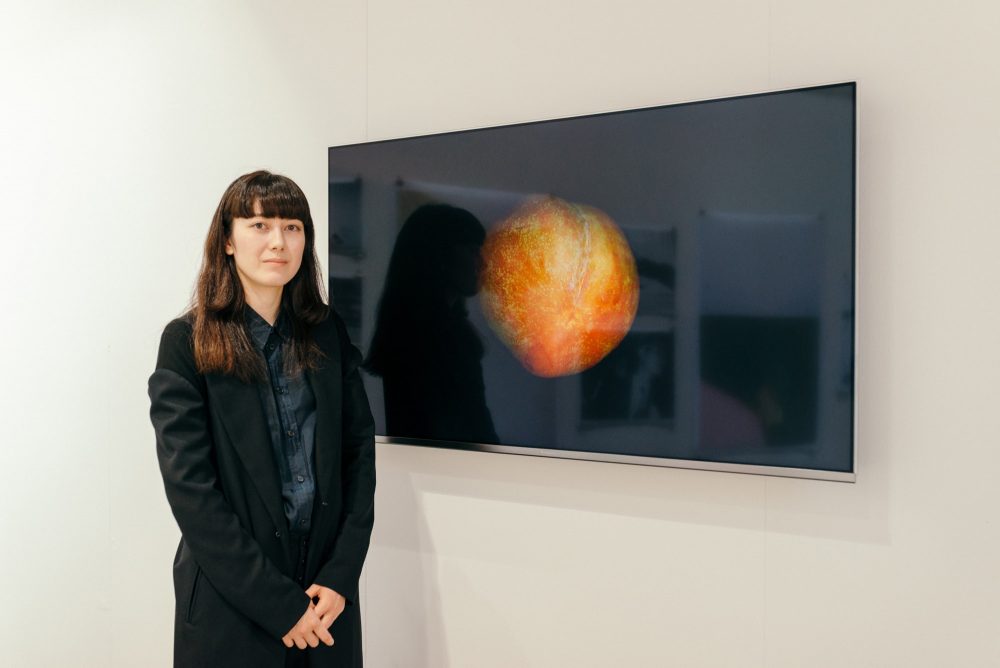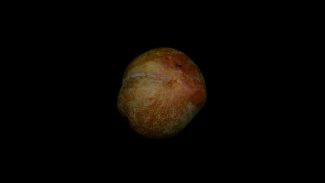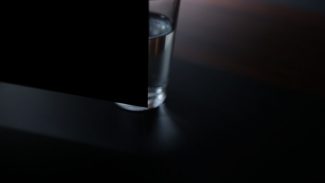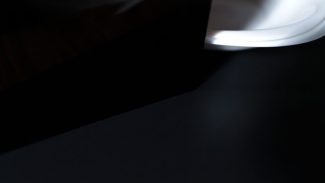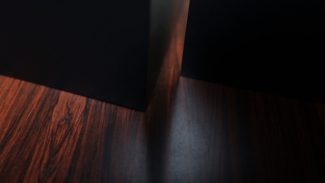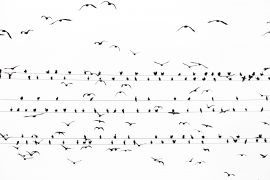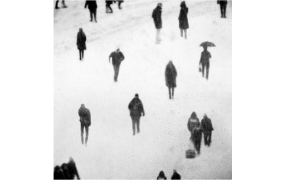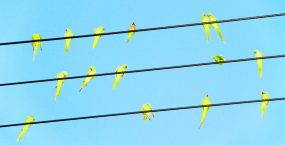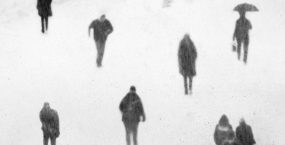“I’m fascinated by the fundaments of things,” says Riyo Nemeth, an artist in contemplation of the act of ‘seeing,’ and the essence of film. For her works displayed at LUMIX MEETS BEYOND 2020 BY JAPANESE PHOTOGRAPHERS #6, Nemeth combines still images with videos utilizing complex editing processes designed to stimulate thought about our sight and knowledge processes. In the modern world with videos available to anyone at any time, this question is both simple and profound. “What is it that we’re looking at?” – we asked about her production process that led her to this question.
Interview/Composition=Eisaku Sakai
Photo=Dustin Tierry
―At first glance, your videos resemble photographs. What is it that got you started in film? I heard that you studied at Central Saint Martins in London.
I’m not entirely certain what started it all, but I did take a film course at Saint Martins. A simple reason for that was that my sister one year above me was enrolled in Painting, and I didn’t want to do the same thing as her; I also wasn’t very good at drawing. I had an interest in photography from before, and after trying both photography and film, I chose film.
―What kind of works were you shooting at the time?
It was kind of the same thing that I’m doing now – I was taking loop videos. From the beginning, I never dealt with story-like narratives.
―Is there something that drew you to loop videos?
I like how they’re always there, and you can watch them for however long you want. Sometimes when going to a gallery for example, you have to watch a video work from the beginning to the end – I don’t like that. Of course, as a videographer that’s not the best attitude to have. (Laughs) Since I have a thing for photographs, I find myself inclined to make something similar to that.
―It seems like you focus on nature in your works. Was that something you’ve kept to consistently?
I like things that are natural and raw. I undergo a variety of tests to take apart reality using things that everyone is familiar with. You can see it in “Consonant Intervals,” which I filmed especially for the LUMIX MEETS BEYOND 2020 BY JAPANESE PHOTOGRAPHERS #6 exhibition, and as of late I’ve been working with fruits and flowers in particular. I’m drawn to items that fit in the palm of your hand; when shown on screen, it’s easy to get an idea of their size, weight, and depth. It’s simple for anyone to get a sense of the texture.
―When it comes to things everyone is familiar with, items from nature seem to play that role best. Do you ever think of filming subjects other those taken from nature?
I’ll film anything, but what I’m most interested in is editing and the mechanics of shooting videos. That’s why I can never figure out what to film. One may wonder if there’s a special meaning latent in me filming an apple for example, but that’s not necessarily the case.
Movement is a natural element of videos, but fruit and flowers don’t move on their own – meaning that I have to edit the videos to create movement. Seeing them come to life is a joy…. I guess it’s strange to describe that as joy though (laughs). Through the process of production, I hope to depict everyday items as something altogether different.
―In the past, you talked about “materializing” time, the senses, and memories into three-dimensional objects. Is that a reference to your editing process?
Hmm. When filming, I record from multiple angles like how one takes a 3D video and then layer them together during editing. I’ll have it move between about 8 different videos every two seconds, or I might mesh them together. Throughout the process I continue to add onto material I’ve recorded, but yet it also feels like I’m creating something from a blank canvas: like I’ve become a painter.
―Your images, while they appear simple, are actually very complex. It seems like one characteristic of yours is your use of a dark screen – do you intentionally darken your environs when filming?
This is the darkness from when the display disappears. Whenever I center an object in front of a dark background, I do so in order to emphasize its three-dimensionality: to make it appear like the object’s been placed on top of the screen. I also want to create images that remains unbound by the frame that the screen presents. Perhaps that’s why there’s so much black in the composition.
“Rerun”(2017)
―As you go about the editing process, what is it that you aim to achieve?
One thing, for instance, is that it’s not about how to depict an apple as an apple, but about getting the viewer to notice the things that seem or feel out of place. The object is what it is, but I want to present a different aspect of it. There’s a sense of incongruity inherent to videos themselves, but we watch them while remaining unaware of such things. Or maybe it’s less about not noticing it, but that we’ve just come to accept those incongruities as normal. I’ve fixated on videos as a medium of expression, but in reality, I’m fascinated by the fundaments of things. It might be simplistic, but there is nothing more familiar to you than what you make yourself, and it’s my intention in making these works that they be a commentary on video itself.
―What do you mean by ‘the fundaments of things?’
I’ve always been intrigued by the phrase, “suspension of disbelief.” When you’re watching a play or something, they may have painted in a town in the background – but even if there aren’t actually any real buildings there, you create the illusion in your head in order to enjoy the production, ignoring reality. In film, even with documentaries, you’re constantly building a story. You’re not showing reality as it actually is. And people do this naturally.
In photography and film especially, you find yourself asking the question: “What am I looking at?” Sometimes what you’re seeing is only visible for the sake of your own convenience, so you’re not always sure if you’re truly seeing what’s being shown on screen or not. This is a point that I want to continue to cover as a theme in my work.
―Do those kinds of questions come to mind when you’re making a video?
Yes. My first conception of a film usually starts with a question, rather than with a concrete idea of what I want to portray. I begin with a desire to know, and as I go along, I begin to discover the meaning of my own work.
―What kind of question inspired “Consonant Intervals”?
What is it that my videos have communicated up until now? What do they portray? My work depicts a combination of items taken from nature, but arranged in a way that’s not found within the natural realm – but to what extent have I been able to realize these sights in video form, and to what extent can they really be called “natural”? These kinds of questions.
The video begins with an ant walking around an apple, and at the end I’ve turned the apple in my hand so that the ant moves towards the center. I think about it from that place of contrast. When recording the video, I set up a light in front of the camera and placed an ant on the apple, filming until the ant ran away. But to go to those lengths is, in itself, very unnatural.
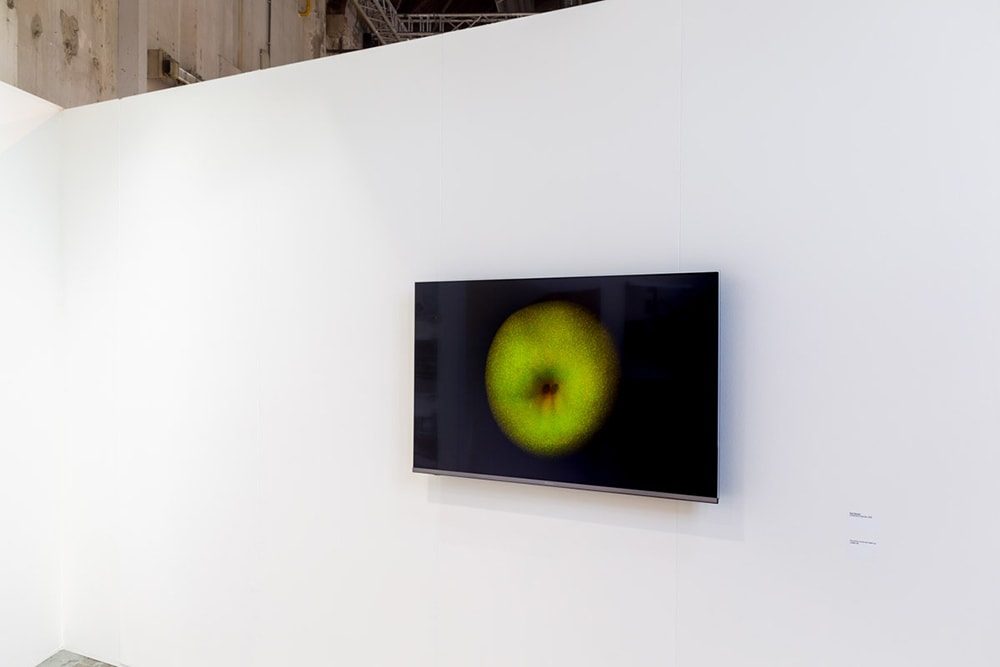
The exhibition for “LUMIX MEETS BEYOND 2020 BY JAPANESE PHOTOGRAPHER #6” in Amsterdam(photo by Shinji Otani)
―So nature functions as the subject, but the act of recording itself is inherently unnatural.
The ant is walking around naturally in the first scene, but I attach and layer more footage onto it. I’d like to think I was able to smoothly connect the two by juxtaposition this time around.
―What fell into place for you through juxtaposing the two?
I think it’s in the contrast between the edited and unedited footage. Despite that, though, I feel like I may have not reached a conclusion to my own questions. There were never any eureka moments, but I feel like that may be a constant from here on out. I continued shooting and editing in the midst of that, and I felt like when the juxtaposition seemed to click into place, it was like the question itself became clearer.
―It seems like that was significant. It’s a really difficult task to pinpoint the question you want to ask. And what’s more, you always explore such fundamental topics.
I had this itchy, restless feeling in my senses, and while I was able to dispel that, I still find myself without a proper answer… it’s still so unclear to me (laughs). Even though I myself feel relieved, if someone were to ask what the point of all of it is, I wouldn’t be able to give a response. But I think that’s why I think that my videos center around such simple subject matter.
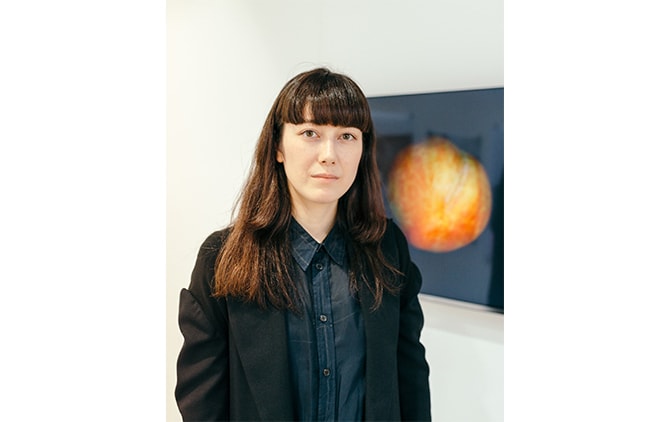
Riyo Nemeth
Born in Tokyo in 1989. Graduated from Central Saint Martins College of Art & Design in 2012 and now lives and works in Tokyo. Using moving images and photography as her medium and often subject matter, Riyo Nemeth explores through various video editing techniques. The viewing subject which is often chosen from familiar sights are reconstructed in two dimensions, creating unfamiliar views in search of the differences between space, time and the tangibility within images.
http://www.riyonemeth.com/





